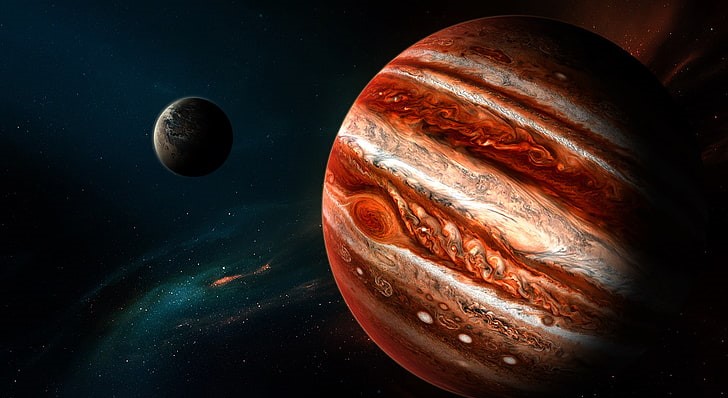Knows about Jupiter Planet

Jupiter, the largest planet in our solar system, has held a prominent place in human understanding of the cosmos for millennia. From ancient observations to modern space exploration, the history of Jupiter is a tale of discovery, awe, and scientific exploration.
Discovered by
Jupiter has been visible in the night sky since ancient times, and it is one of the five planets visible to the naked eye from Earth. Therefore, it was not “discovered” by a specific individual. Ancient astronomers, including Babylonian and Greek observers, were aware of Jupiter’s existence.
If we consider the use of telescopes for a more detailed observation, Galileo Galilei made significant contributions in the early 17th century. In 1610, Galileo observed Jupiter through a telescope and discovered its four largest moons, now known as the Galilean moons (Io, Europa, Ganymede, and Callisto). This observation was groundbreaking as it provided evidence that celestial bodies could orbit other celestial bodies, challenging the geocentric model of the universe.
Ancient Observations and Mythology
Jupiter, named after the king of the Roman gods, has been observed since ancient times. Babylonian astronomers documented its movements as early as the seventh or eighth century BCE. In Roman mythology, Jupiter was associated with Zeus, the king of the gods, and the planet’s prominent presence in the night sky earned it a place of reverence.
Galileo’s Telescopic Revelations
The advent of the telescope in the 17th century marked a transformative period for astronomy. Galileo Galilei, in 1610, turned his telescope toward Jupiter and made a groundbreaking discovery – four large moons orbiting the gas giant. These moons, now known as the Galilean moons (Io, Europa, Ganymede, and Callisto), provided evidence that not all celestial bodies orbited Earth, challenging the geocentric model of the universe.
Jupiter’s Composition and Characteristics
Jupiter is primarily composed of hydrogen and helium, resembling a failed star in many aspects. Its colossal size – over 11 times the diameter of Earth – and immense mass contribute to its powerful gravitational influence in the solar system. The planet’s iconic feature, the Great Red Spot, is a massive storm that has raged for at least 350 years.
Pioneer and Voyager Missions
In the late 20th century, NASA’s Pioneer and Voyager missions provided close-up views of Jupiter. Pioneer 10 conducted the first flyby in 1973, followed by Pioneer 11 and the Voyager 1 and 2 spacecraft. These missions captured detailed images, atmospheric data, and insights into Jupiter’s magnetosphere, shedding light on the planet’s complex dynamics.
Galileo and Juno
In 1995, the Galileo spacecraft arrived at Jupiter, conducting an extended exploration of the planet and its moons. More recently, the Juno spacecraft entered Jupiter’s orbit in 2016, providing unprecedented data on the planet’s atmosphere, magnetic field, and interior structure. Juno’s mission continues to unravel the mysteries of Jupiter’s formation and evolution.
Beyond Jupiter
Jupiter plays a crucial role in our solar system dynamics. Its immense gravitational influence helps shape the orbits of other planets and objects, contributing to the stability of our celestial neighborhood. Its status as a gas giant offers valuable insights into the early stages of planetary formation.
Future Exploration
The intrigue surrounding Jupiter persists, with plans for future exploration. The European Space Agency’s Jupiter Icy Moons Explorer (JUICE) mission aims to study Jupiter’s moons, while NASA’s Europa Clipper mission is set to explore Jupiter’s moon Europa for signs of potential habitability.
Conclusion
In conclusion, Jupiter stands as a colossal giant in our cosmic narrative. From ancient mythologies to modern scientific revelations, the history of Jupiter is a testament to humanity’s ceaseless curiosity and exploration. As we continue to delve into the mysteries of this gas giant, Jupiter remains a celestial behemoth that both captivates our imagination and deepens our understanding of the vast universe we inhabit








